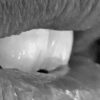Root Canal Therapy or RCT has become a common name in the dental therapy circuit. Although it can sound painful and time-consuming, the procedure is painless and doesn’t take much time-depending upon the dental surgeon or the orthodontist. It is often used as a long-standing treatment for serious dental problems like infection in the pulp, abscesses in the tooth, contamination of the surrounding denture, and others.
Symptoms that signify the requirement for root canal
Usually, a root canal is prescribed when the teeth are facing a serious problem and the procedure is designed to provide a long-lasting solution. The damage to the pulp is often the reason a root canal is needed, which can occur due to the following reasons;
- Progressed decay due to a cavity that has been left untreated.
- A crack or fissure in the teeth.
- Injury due to eternal forces, which can injure the pulp without affecting the tooth.
- The teeth being subjected to more than one type of dental operation.
- Swelling of the gums.
- Sensitivity of the gums.
The dentist may take X- rays to confirm the diagnosis. Otherwise, it is not uncommon to seek the opinion of second orthodontist.
What steps are needed for RCT?
The root canal procedure takes place in the dentist’s office. After the proper disinfection and checking, the patient is put on the chair and covered with a cloth or bib. The dentist will apply a suitable anesthetic to numb the area of the teeth to be operated on. A short-lived pinching or burning sensation may be felt by the patient.
Thereafter, once the anesthetic has taken effect, the dentist will create a small hole in the tooth, exposing the damaged and infected pulp; which they will clean with the use of specialized tools called files. All the pathways or canals of the tooth will be thoroughly cleaned by the orthodontist. The patient will not lose consciousness but will also not feel any pain.
After the cleaning, the dentist will apply an antibiotic to reduce and prevent any form of infection. The cleaned and disinfected tooth will be filled and sealed by the dentist. They may also prescribe oral antibiotics. The opening created at first by the dentist would be sealed by him to prevent damage by saliva.
Probable issues after RCT
RCT is usually a very effective procedure and has an impressive success rate. However, problems occurring after RCT are not unheard of. Let us know about some of the phenomena that can surface after the RCT has been completed:
- If the damage has spread extensively or the enamel has weakened, the RCT may not be fruitful.
- Re-infection may occur due to faulty operations or improper antibiotics. Also, the bacteria present in the secondary infection may be resistant to the prescribed antibiotic.
- The sealant or the filler may cause sensitivity in the patient’s oral tissues.
The dentist providing root canal repair in Jaipur may opt for extraction if he or she feels the damage to be too severe.
The care after root canal
RCT is depicted as a restorative procedure by dentists. People undergoing this procedure can have a life-time guarantee of treatment efficacy. However, it depends upon the care taken by the patient after the root canal. The care that should be taken after the root canal can be listed as follows:
- As root canal requires a surgical approach, mild pain may be felt after the anesthetic wears off. Tenderness or inflammation in the jaw is also common. The pain may be managed by over-the-counter medication like ibuprofen or general antibiotics; although other stronger narcotic may have to be used. If the pain persists longer, it is better to consult the dentist. Other problems that will require a dentist intervention can be listed as:
– Pain or pressure lasting longer than a couple of days.
– Detectable inflammation inside or outside the oral cavity.
– Rash, hives, or itching due to the medication,
– Uneven-feeling bite.
– Loosening or coming out of the temporary crown or filling (although losing a single layer is ok).
– Symptoms surfacing before treatment returns again. - The foods to be taken after an RCT will require special attention too. Sensitivity may occur after treatment, which would need soft and easily digested food for the patient. Also, spicy foods should be best avoided by the patient. Hard and chewy foods can displace the filling in some patients. Softer foods like oatmeal, scrambled eggs, or soups should be ok. Also, the temperature of the food should be optimal, neither cold nor too much hot.
- Good oral healthcare should be followed just like before. Brushing and flossing twice a day cannot only work wonders but can prevent future procedures too. However, brushing and flossing should be done gently to avoid any dislodging of the temporary filling.
- A temporary filling is placed inside the crown till the tooth has healed and the permanent one can be put in place. The instruction given by the dentist should be followed to ensure a quick recovery.
Keeping a balanced life
RCT is applied to ensure the maintenance of the natural dental arrangement and functionality. This procedure of root fracture fix in Jaipur allows the functionality of the teeth to remain as it is, as the nerves are required only to provide sensation like heat or cold, they do not have any effect on the functions of the teeth themselves. Eating right, following good oral hygiene, and following the dentist’s instructions properly can provide a life-long effective RCT procedure.





